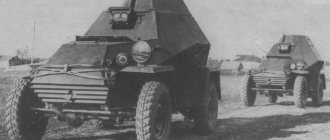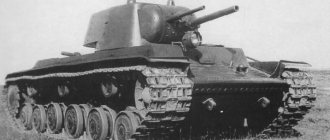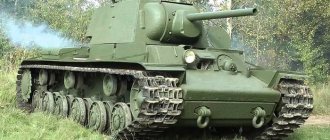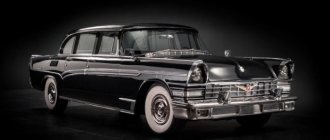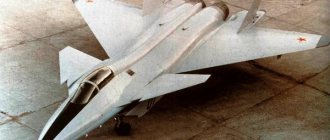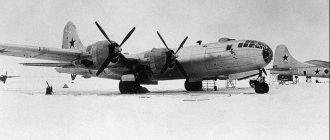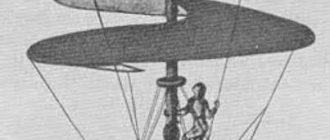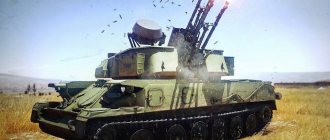Soviet army SUV GAZ-67
Modern jeeps, all-wheel drive off-road vehicles, have become quite “glamorous”, expensive and complex in design. Meanwhile, during the Second World War, when the first cars of this class appeared, they represented a real standard of simplicity and unpretentiousness. This was the Soviet GAZ 67, known as “Ivan Willis” - an army SUV that gained enormous popularity among the troops and in civilian life. The design of this car turned out to be very durable and tenacious, thanks to which some copies of the GAZ-67, sometimes subjected to tuning, are still on the move and are successfully used by their owners.
First we made a crossover!
It is curious that the cool GAZ-67 SUV appeared after the car, which can now be called a crossover.
This car with a comfortable closed body and all-wheel drive began to be designed in Gorky in 1938, similar to the American Ford Marmon model. Marmon-Herrington made all-wheel drive versions of production cars, mostly Fords.
GAZ-61 with a closed body from a modernized “emka” - GAZ-11-73 was brought to production with great difficulty, which began just before the war. The car remained a small-scale production unit.
Advantages and disadvantages
The GAZ-67 car has the following positive qualities:
- Very robust and extremely durable design of all main units;
- Simplicity of machine design and high maintainability;
- Excellent maneuverability and agility;
- GAZ-67 can be transported on transport aircraft;
- The highest cross-country ability of the car, which by this criterion confidently surpasses some of its modern “rivals”;
- Versatility of use. The GAZ-67 can be driven in the city, in the mountains, through a swamp, and through the forest, and parking will not cause any difficulties due to the small size of the car.
The disadvantages of the jeep are quite obvious and are largely determined by its very concept:
- Extremely poor dashboard;
- Gearbox without synchronizers, which is quite unusual for modern drivers;
- Stiff suspension and primitive seats;
- Protection from precipitation and wind is symbolic; there is no heating system.
In addition, the GAZ-67 cannot be called an economical car. With its light weight, it consumes at least 13 liters of gasoline per 100 kilometers.
34 tools were stored in four trunks
The small soldered radiator grille is a sign of a wartime car. Later, stamped grilles were installed.
The small soldered radiator grille is a sign of a wartime car. Later, stamped grilles were installed.
The body of the GAZ-67B is original. But it couldn’t be simpler. The shape of the wings is designed to reduce the emission of dirt from the wheels - there are no doors. And the canvas sides that replaced them were most often not used.
The back seat is narrow. To the left and right of it are small storage boxes.
The back seat is narrow. To the left and right of it are small storage boxes.
Instead of a trunk there are four small drawers. Two are on the front fenders, one each on the right and left of the rear seat. But the list of driver’s tools includes thirty-four items! Including the now almost forgotten chisel, bit, funnel for filling fuel and even a suction cup for lapping valves (as it is written in the instructions!).
The frame of the car is also original. And the axles from the GAZ-61 with a wide track made it possible to abandon the rear stabilizer, as on the GAZ-64. And it has become more comfortable to drive in the ruts left by the trucks.
Historical reference
The Soviet military vehicle GAZ-67 was the result of a deep modernization of the earlier GAZ-64 SUV, developed before the war. Unfortunately, it was not immediately possible to establish its serial production, so the Red Army knew much better the American Willys supplied under the Lend-Lease program. Meanwhile, the Soviet jeep was in no way inferior to its overseas competitor, and in some characteristics even surpassed it.
Creating a classic version
In the summer of 1940, the American automobile manufacturer Bantam signed a contract to supply the US Army with seventy all-wheel drive BRC40 passenger cars, which later became known as jeeps. In the USSR, they learned about these cars a little later, when their photographs taken during testing appeared on the pages of Automotive Industries magazine. I.P. was the first to read the article about the American novelty. Tyagunov is the head of the main armored department of the Red Army. He immediately became obsessed with the idea of creating a “Soviet Bantam.”
American car Bantam BRC-40 produced in 1941. Some of these cars came to the USSR under the Lend-Lease program
V.A. spoke in support of this plan. Malyshev, People's Commissar of Heavy Engineering, and already in January a government order was sent to the Gorky Automobile Plant, ordering the preparation of a project for a new car as soon as possible. Since nothing like this had been done before in the USSR, it was decided to take the geometric dimensions of the BRC40 as a model. This applied to both the wheelbase length and the track width.
GAZ designers still had some experience in creating off-road vehicles. They, for example, developed the GAZ-61-40 all-wheel drive car, however, from the very beginning it was clear that it would not be possible to use this model as a base one: the engine did not fit, the dimensions did not match. It was also impossible to “borrow” anything from the Americans, since, apart from photographs, there was essentially nothing in the magazine.
Considering the urgency of the assignment received, the lead designer of the project V.A. Grachev decided to use a number of units and components that had already been tested on other GAZ models to create a new car:
- Front and rear axles, steering, wheels, transfer case, driveshafts, front suspension and brakes - from a GAZ-61-40 car;
- The manual transmission and engine are from a GAZ-AA truck (known as a “lorry”);
- The ML-1 carburetor and a fan with six blades are from the KIM-10 compact car;
- The water pump of the cooling system is from GAZ-11.
The radiator looked completely new, however, and it was actually part of a similar unit created earlier for the GAZ-AAA (three-axle version of the lorry).
At the same time, the supporting frame had to be designed virtually from scratch. It was made as durable as possible.
GAZ-64, the car on the basis of which the GAZ-67 was created
Design work started on February 3, 1941, and on April 15, the new car, initially designated as GAZ-64-416, and then simply GAZ-64, was already sent for state tests, which successfully ended two weeks later.
The first departure of the “Soviet jeep” took place a little earlier - on March 25. Thus, the new model was created in 51 days. However, in fairness it should be noted that the designers of the BRC40 needed even less time - 49 days.
GAZ did not have time to start mass production of cars before the start of the war. To do this, it was necessary to develop a number of technologies, and it was not so easy. The production of “Soviet jeeps” began only at the very end of August 1941, and in total 602 cars were produced by December 31, which, of course, was very little. Then the assembly of the GAZ-64 was almost completely stopped. The main reason for this decision was the use of jeep chassis for mass production of BA-64 armored vehicles.
In addition, it was soon discovered that blindly copying the dimensions of the BRC-40 was erroneous: the GAZ-64 “did not fit” into the track left by the trucks. The narrowing of the width also reduced the stability of the machine. Everything indicated that the military vehicle needed significant modifications.
On September 26, 1942, a modernization plan for the GAZ-64 was approved, which included eliminating the main shortcomings of the jeep. The design work required for this could only begin in mid-February next year.
Armored car BA-64, created on the GAZ-64 chassis. Due to the urgent need for such vehicles, the production of jeeps was practically stopped
The first three experimental SUVs, which received the new GAZ-67 index, were manufactured in the second half of April 1943. A few months later, in July, they were further refined - changes were made to the design of the body, frame and muffler. The main thing was the expansion of the track to the normal previous size of 1446 mm.
In September 1943, factory tests were carried out, which showed the unprecedented survivability of the vehicle's design: after towing a ZIS-3 gun along a road with broken cobblestones (550 km) and along country roads (930 km), the GAZ-67 remained serviceable, despite the excess load. At the same time, the cannon's chassis was completely out of order.
After this, full-scale mass production of the machine began. Before the end of the war, 6068 GAZ-67 vehicles were produced.
Improvement and modernization of GAZ-67B
The development of large-scale production of the “Soviet jeep” took place in parallel with further work to update its design. As a result, already in 1944, the Gorky Automobile Plant began producing a new version of the car, later known under the designation GAZ 67B.
SUV GAZ-67B with a stretched tarpaulin awning
The very first car with this name began to be tested in January 1944, however, various improvements were carried out throughout this year.
Here is a partial list of them:
- The steering axles of the front axle are equipped with durable and wear-resistant White-type bearings. This significantly strengthened the design of the front axle of the car;
- The front springs began to be installed on through bolts, which increased the strength and rigidity of their fastening;
- The shock absorbers received hinges instead of the previous rubber cushions;
- Wheel rims of increased strength (by increasing their thickness) and a simplified configuration were introduced;
- A new distributor R-15 was installed on the engine, replacing the previous IM-91.
In addition, the vehicle's transmission was strengthened. In general, the GAZ-67B has become more durable and adapted to the most severe operating conditions. At the same time, the closed wooden body proposed back in the fall of 1943 was not installed on the jeep, although no one questioned the very need to provide the crew with at least minimal protection from rain, snow and cold. It’s just that any improvements required changes to the technological cycle, which threatened to slow down the pace of production. As a result, the car body remained the same - with cutouts instead of doors.
Subsequently, already in the post-war years, the GAZ-67B was modernized again. In particular, the jeep received a new radiator grille, which was made using stamping rather than welding, an improved fuel filter and a K-22 carburetor. In addition, the main drives of the bridges were improved.
GAZ-67-420 is a modification with a wooden body that did not go into production. The weight of the car increased by only 25 kilograms
After the next update of the ignition distributor, it became possible to configure the engine to use different types of gasoline, since there was now an octane corrector.
Two years before the end of mass production, the GAZ-67B was equipped with double-action shock absorbers, which improved its driving performance. The car was removed from the assembly line in 1953, shortly after the appearance of the newer army all-terrain vehicle GAZ-69. A total of 92,843 GAZ-67B vehicles were produced. Some of them have successfully survived into the twenty-first century, have been tuned and continue to be used for their intended purpose.
Oil was poured into the air filter
The pre-war 3.3 liter lower valve engine develops 54 hp.
The pre-war 3.3 liter lower valve engine develops 54 hp.
The engine is from a modernized GAZ-MM lorry. The power of the lower valve engine with a displacement of 3.3 liters was increased from 50 to 54 hp. The main gas tank is located between the engine and the windshield - just like a semi.
There is a second gas tank under the driver's seat. The first is between the windshield and the engine.
There is a second gas tank under the driver's seat. The first is between the windshield and the engine.
The second is under the driver's seat. The total fuel supply is 70 liters. Very decent!
The radiator is large, from a three-axle GAZ-AAA, but cut off at the top. It was recommended to change the oil in the air filter (yes!) every 900 km in winter and 300 km in summer.
By the way, the engine oil was also changed after 900 km.
A wooden steering wheel was installed only on the early GAZ-67B - wartime vehicles.
A wooden steering wheel was installed only on the early GAZ-67B - wartime vehicles.
The instruments are also from a semi-truck, or rather even from a Ford. Fun little speedometer, ammeter and fuel gauge in the main tank.
Applications and modifications
Off-road GAZ-67s were used in the Red Army as a vehicle for command personnel and reconnaissance units. After the end of hostilities, deliveries of vehicles began to the civil service, where they were used in agriculture, forestry and geological exploration.
On the basis of the GAZ-67, an experimental version of the 67V vehicle was created, developed in the summer of 1944. The car was supposed to be used in civilian service, so changes were made to the design to reduce the cost of production.
The transfer gearbox and front drive axle along with the cardan drive were excluded from the transmission. In front it was planned to place a standard beam from a GAZ-M1 passenger car. It was also supposed to borrow tires with a road tread pattern from it. The project did not reach series production.
In the spring of 1949, the floating car NAMI-011 appeared, which later became known as MAV or GAZ-011.
The car was built in small batches until 1953, and then was modernized taking into account the appearance of improved units from the GAZ-69.
Living legend
In the mid-1970s, back in Moscow, people drove such heavily modified cars simply on business. And even today it is not difficult to find a GAZ-67 on the go. True, it is very rare to find cars in good condition.
The fate of the first Soviet jeep - the progenitor of modern UAZs and the standard SUV - turned out to be happy, although not easy. After all, the first is always the hardest.
- When planning to go off-road, it is always better to put chains on your wheels in advance. If the need for chains is not obvious, make sure that bracelets are available. Antibuks will also come in handy.
- “Behind the Wheel” can now be read on VKontakte.
The first Soviet jeep: 9 amazing facts about the GAZ-67
Owner reviews
Quite an unusual tuning of the GAZ-67 car
Despite the fact that the last production copies of the GAZ-67 rolled off the assembly line back in 1952, the technical characteristics of this car allow it to be used today. On the Internet you can easily find reviews from those who took the risk of purchasing and repairing an old Soviet jeep. This car is criticized extremely rarely, mainly for its excessive “gluttony”.
By the way, excessive fuel consumption is often explained by engine wear or insufficiently thorough reconfiguration of the ignition system for modern gasoline. It should not be forgotten that wartime fuel was low octane by today's standards.
The bulk of the reviews are not just positive, but rather even enthusiastic. Drivers especially like the “indestructibility” of the car. Indeed, the margin of safety laid down by Soviet designers turned out to be simply enormous, which is especially noticeable against the background of modern SUVs, which after a few years of operation are no longer good for anything.
Another option for tuning the GAZ-67, with additional headlights and new wheels
In many cases, to improve the appearance of the car, its owners use tuning, which for the GAZ 67, as can be seen in a number of photos, comes down to making “cosmetic” changes. However, no one forbids subjecting the car to a deeper modernization: installing soft seats in the back, replacing windshield wipers or installing new, more powerful headlights. True, with such modifications the “authentic” harsh appearance of this old Soviet car will be lost, which, apparently, will not soon completely turn into a museum exhibit.
GAZ-67B
The instrument cluster of the GAZ-67B was borrowed from the lorry.
The instrument cluster of the GAZ-67B was borrowed from the lorry.
SENIOR IN RANK
Until 1945, approximately 5,500 64s and 67s combined were produced - a drop in the bucket compared to the tens of thousands of Willys and similar Fords delivered under Lend-Lease.
The GAZ-67 became popular in the post-war years. “Gaziki” worked on collective farms and cities, and served in the army and police. They were driven by the same slightly stern, courageous drivers, who in the summer squinted from the dust, and in the winter they built homemade booths on top of the bodies, which at least somehow saved them from the frost. Then the cars were written off and began to be sold to private owners: in capable hands and, of course, with later components and parts, they served for decades.
Even though most GAZ cars were born after the Victory, and many, like this one, who works as an actor at Mosfilm, acquired a fair amount of non-original parts, these cars can rightfully be associated with the Great Patriotic War. Just like the concepts of “courage”, “labor”, “perseverance” that are not very popular today, and to some even seem worn out. Today, such “gas cars”, regardless of the year of manufacture, often participate in parades dedicated to Victory Day. And they certainly deserved this honor.
Liked:
- laconic design There is nothing superfluous in the car, and if something seems unnecessary, then you simply have not yet understood its purpose. This is temporary.
- good cross-country capability The off-road arsenal is small, but the designers squeezed everything they could out of it. In extreme cases, you can lift a light car out of the mud literally by hand.
- high-torque engine The 3.3-liter gasoline engine does not shine with power, but has a decent torque of 180 Nm (almost one and a half times more than that of the Niva) and produces it already from 1,400 rpm.
- simplicity of design The GAZ-67B is military-style and easy to repair with just a hammer at hand.
Specifications
| Automobile | |
| brand, model | GAZ-67B |
| Production | USSR |
| Year of issue | 1944 |
| Body | frame |
| Type | SUV |
| Number of doors | none |
| Number of seats | 4 |
| Engine | |
| Model | GAZ-64-6004 |
| Type | gasoline in-line |
| Location | front longitudinal |
| Supply system | carburetor |
| Number of cylinders/valves | 4/16 |
| Working volume, cm cubic. | 3 285 |
| Maximum power, l. With. (kW)/rpm | 54 (40)/2 800 |
| Maximum torque, Nm/rpm | 180/1 4 00 |
| Dynamic characteristics | |
| Maximum speed, km/h | 90 |
| Transmission | |
| Drive unit | on the rear wheels with connected front ones |
| Transmission | manual 4-speed |
| Suspension | |
| Front | dependent spring |
| Rear | dependent spring |
| Brakes | |
| Front | drums |
| Rear | drums |
| Dimensions and weight | |
| Ground clearance, mm | 210 |
| Length/width/height, mm | 3 350/1 690/1 700 |
| Wheelbase, mm | 2 100 |
| Tire size | 6.50–16 |
| Curb weight, kg | 1 320 |
| Total weight, kg | 1 770 |
| Fuel consumption | |
| On the highway (asphalt), l/100 km | 16 |
| On a dry country road, l/100 km | 20 |
| Volume of fuel tanks, l | 40+30 |
Appearance of GAZ-67
The appearance of the GAZ-67 is very similar to American military SUVs. Komarevsky was involved in its development. It was an open body with three seats for four people. Shelves were installed on the wings, which could accommodate several more people. The car had places for small arms and places for shells of up to 45 mm caliber.
In order to reduce the cost of production as much as possible, it was decided to make the body without doors. For a military vehicle, the absence of doors played an important role during emergency evacuation. In case of danger, you could instantly jump out of the car and take a fighting position. If it rained, the doorways could be covered with tarpaulin aprons specially designed for this purpose.
For bad weather, a special canvas awning was provided, which was installed on only one arch. After the modernization, it was decided to abandon this installation of the awning and new modifications received two arcs. The windshield stood strictly vertical. Despite the deterioration of aerodynamic characteristics, such a glass installation made it possible to completely protect the driver from solar glare. In addition, the windshield could be folded forward and locked in this position.
An interesting scheme was used for windshield wipers. The driver's brush was operated by a vacuum drive, and the passenger's brush was operated by a mechanical lever. Since it was a military SUV, it was decided not to install sidelights and rear-view mirrors.
In order to simplify the production of the GAZ-67 as much as possible, it was decided to make the body in one plane. The end parts of the body panels were edged with pipes. Spot welding technology was used to fasten the body panels. Arc welding was practically not used.
To smooth out the outlines of the front of the car, it was decided to use body parts from GAZ-AA. The original GAZ-67 steering wheel is also interesting - it has a wooden rim. The front grille of the car is decorated with a branded emblem with the inscription “GAS”. The following parts were taken from the GAZ-AA model:
- Hood cover;
- Gas tank;
- Dashboard.
All these parts were taken unchanged and are interchangeable. Since the installation of the front bumper was unsuccessful during operation of the GAZ-64, it was decided to install it as far forward as possible. This made it possible to relieve some of the stress from the car frame under shock loads.
How did the Model 67-B come about?
The first prototype of the improved version of the 67 was demonstrated to GAZ management at the beginning of 1944. The modernized copy received the index “B”. His tests lasted about five months. During this period, prototypes managed to cover 20 thousand kilometers in a variety of conditions. As a result, the military commanders liked the new modernized SUV so much that they ordered the immediate start of serial production of the model.
What is noteworthy is that in the first years the “B” marking did not appear in official documentation. Until 1950, many military personnel confused the 64 and 67 models, believing that the latter was an improved version with improved axles.
Did not like:
- ergonomics It is unfair to demand comfort from a car created in wartime, but some problems could be eliminated with little expense.
- dangerous placement of the fuel tank The main 40-liter tank is located between the passenger compartment and the engine, and an additional 30-liter tank is located under the driver. Even in peacetime one feels uneasy from such proximity.
- weak brakes Cable brakes without a booster are a mixture. Even for simple deceleration, enormous efforts have to be applied to the brake pedal; their effectiveness is extremely low.
Salon
The car has the most ascetic interior. There are no plastic covers here. Bare metal everywhere. The seats are leatherette, without adjustment. The steering wheel is moved closer to the center. There is no instrument panel as such - just a couple of sensors. The speedometer and tachometer were also missing. On the passenger side there is a metal handle that you can hold on to when the car is driving on uneven roads (by the way, a similar handle has been preserved on the UAZ Hunter, which is still in production). The floor is almost flat. In the center is a metal cover under which the gearbox was located.
Note that initially the GAZ-67 was equipped with a four-spoke steering wheel with a diameter of 38.5 centimeters. This steering wheel was developed within 24 hours. However, it was later replaced by a more modern, three-pointed one. It is made of plastic. The diameter of the steering wheel became 42.5 centimeters. There are no steering column adjustments here. Everything is as simple and reliable as possible. The steering wheel turned out to be so comfortable that it was subsequently used on GAZ trucks.
GAZ-67B
There is a flag on the gearbox lever for fixing the reverse gear.
Nearby are the handbrake and the front axle connection lever. There is a flag on the gearbox lever for fixing the reverse gear. Nearby are the handbrake and the front axle connection lever.
BUILDING SONG
The strength and weakness of the 67 was its maximum unification with production vehicles. "Willis" was created from scratch. The Soviet car was designed and prepared for production in an unimaginably short time. It was simple, as simple as an all-wheel drive design can be, and was suitable for repair even by the hands of unskilled mechanics. An engine with a compression ratio of 4.6 is capable, unlike American engines, of even consuming what would be a shame to call gasoline. The Willys-MV has a compression ratio, by the way, of 6.48.
Well, the weakness is the heavy and old-fashioned (even at that time) made controls. Again - in comparison with the American Willys. The steering wheel and pedals require serious effort, the gearbox does not have synchronizers, the mechanical brakes are of low efficiency, and the shock absorbers from the Emka are single-acting. However, for unspoiled Soviet drivers all this was not so important. Especially if you don't try something else.
Much more important is the high-torque engine, albeit not very powerful, and the first-stage gear ratio of 6.4! It compensated for the lack of a decreasing series. At the first, the instructions recommended starting off only in very difficult conditions or with a gun on the tail.
While driving the 67, you are tempted to show some kind of soldierly daring. The boot allows you to boldly step where civilian boots are afraid to tread. In the same way, I want to send the GAZ-67 into a gallop through pits and ditches. You just need to hold on to the steering wheel tighter and, flying over the hard seat, not lose your feet on the pedals. If you succeed, you should squeeze the clutch twice, change gears and, announcing the surroundings with a military roar, speed up. This is an all-terrain vehicle! All modern all-wheel drive dandies compared to the background of the 67th are a travesty!
Wheels
The car was equipped with 16-inch wheels. GAZ-67 was equipped with 6.50″ tires. The tread width and side height were the same - 15 centimeters. In terms of modern markings, the tires had a size of 165 x 85. The width of the tires was strictly limited.
If you increase this parameter (as off-road enthusiasts do now), there is a risk of getting caught in the steering mechanism. The standard all-wheel drive GAZ-67 was equipped with radial tires with “split-tree” type lugs. The design of these tires was borrowed from the previous SUV model 64. The tires were produced by the Yaroslavl plant. By the way, during the war years there was a shortage of tires, and some models had to be equipped with wheels from the GAZ M1. Their main disadvantage was the tread pattern. These were road tires that performed poorly off-road.
Body
The appearance of this car was almost identical to the previous, 64 model. Because of this, many people were confused. However, among the main differences can be identified a different shape of the front wings. On the old version they were rounded. And on the new ones the wing has an angular shape. Otherwise, the appearance was the same and resembled the American Jeep Willys.
The main feature of the Gorky SUV is its open body. Up to four people could be accommodated inside. The front seats are split, the rear seats are double. By the way, the wings were shaped this way for a reason: if necessary, two more soldiers could be placed on them. In addition, boxes with ammunition and weapons were attached to the wings. The body was as versatile as possible. In rainy weather, the body could be covered with a special tarpaulin. We also note that the hood on the GAZ-67 car had characteristic cutouts on the rear. These are exhaust slots. This was done to improve the underhood aerodynamics of the SUV.
The windshield is double, mounted on a metal frame. Can be fixed in a vertical position or tilted forward. The wiper was provided only on the driver's side. The car was painted in one color - green. The quality of the metal is so good that many models are still in perfect condition (of course, these are examples after repainting).
